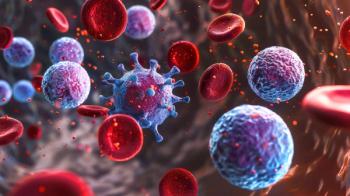
During Early Pandemic, Pregnant Patients With COVID-19 Infection at Delivery Had Increased Risk of Death
Emerging evidence suggests that the risk of maternal mortality was more than 10-times greater among those with COVID-19 infection.
A recent national-level analysis identified COVID-19 infection as a severe risk factor of adverse maternal outcomes, including morbidity and mortality, for pregnant women at delivery during the early part of the COVID-19 pandemic, which investigators published in JAMA Network Open. However, mortality decreased by from 232.9 to 79.1 per 100,000 deliveries over the entirety of the study period.
“The evaluation of the initial pandemic period in this study demonstrates the substantial morbidity and mortality of COVID-19 in pregnant patients,” the study authors wrote in the paper.
There is growing awareness of the risk of COVID-19 infection on pregnant patients and adverse pregnancy outcomes. Data from research conducted both prior to and during the COVID-19 pandemic show the relationship between patient characteristics and pregnancy outcomes, according to the authors of the current study. Although there are limited national-level data comparing the risk of COVID-19 infection with pregnancy outcomes, it appears COVID-19 increases the risk of adverse pregnancy outcomes.
The aim of the current study was to evaluate the maternal outcomes associated with COVID-19 infection during the early pandemic period in the United States. The study included 2,578,095 hospital deliveries between April 2020 and December 2020. Individuals in the national patient estimates were 5.7% Asian, 14.7% Black, 20.6% Hispanic, and 50.7% White across more than 2691 centers.
The primary endpoints are patient characteristics associated with COVID-19 infection and severe maternal morbidity and mortality associated with COVID-19 at delivery (adjusting for known obstetric and delivery factors).
At delivery, 45,425 women were diagnosed with COVID-19. The following characteristics were associated with maternal COVID-19 infection:
- younger age
- later study period
- Black and Hispanic patients
- lower household income
- obesity
- medical comorbidity
- homelessness status
- residing in the US Northeast
- earlier gestational age
- admission to a larger urban hospital
Severe maternal morbidity was worse for patients with COVID-19 infection at delivery, possessing a greater risk of:
- tracheostomy
- ventilation
- acute myocardial infarction
- sepsis
- shock
- cardiac arrest
- coagulopathy
- respiratory distress syndrome
“The odds of severe respiratory complications were increased among pregnant patients with COVID-19 infection at delivery,” the investigators wrote.
In addition, the risk of mortality was 14 times greater among those who contracted COVID-19 at delivery. During the later period, the average time-to-death was 16 days among women who died during hospital admission. Time-to-death from April to June 2020 was 6 days, however, the fatality rate generally decreased from April to December 2020.
Study limitations included a lack of information on the severity and treatment of COVID-19 infection status. The study also did not specify neonatal outcomes, delivery indication, and cause of death either, requiring further research and evaluation.
“Increased failure-to-rescue risk following severe maternal morbidity among patients with COVID-19 adds important information,” the study authors wrote. “[The study] highlights the importance of prevention of COVID-19 in this population.”
Reference
Matsuo K, Green J, Herman S, et al. Severe Maternal Morbidity and Mortality of Pregnant Patients With COVID-19 Infection During the Early Pandemic Period in the US. Accessed April 10, 2023. JAMA Netw Open. 2023; doi:10.1001/jamanetworkopen.2023.7149
Newsletter
Stay informed on drug updates, treatment guidelines, and pharmacy practice trends—subscribe to Pharmacy Times for weekly clinical insights.


















































































































































































































